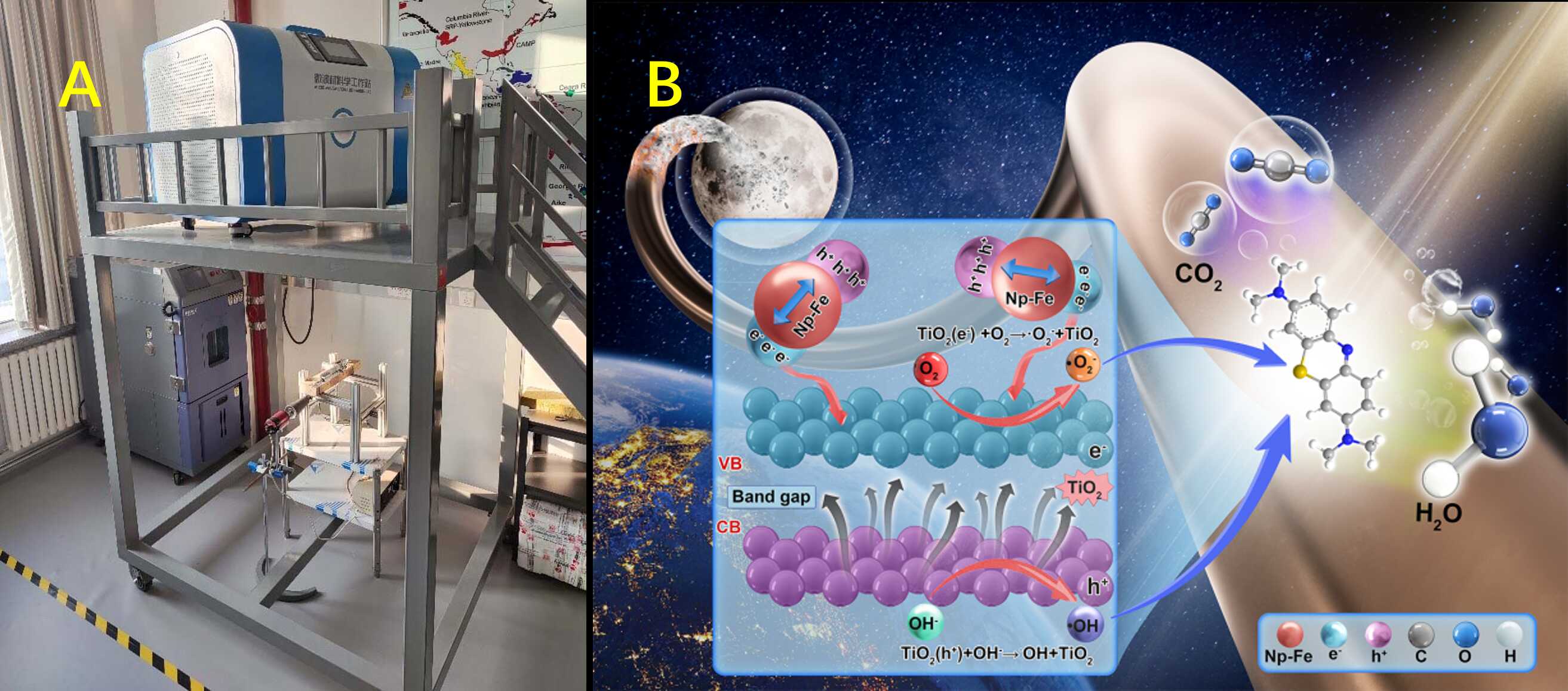Research Progress in High-Value Utilization of Lunar Soil Resources
Editor: | May 09,2025
With the rise of global lunar exploration, establishing lunar bases has become a critical goal for many nations. However, achieving this objective faces two core challenges: first, how to utilize lunar soil for in-situ preparation of high-strength structural materials to reduce Earth-Moon transportation costs; and second, how to effectively address organic pollutants generated by human activities on the lunar surface. Although lunar soil is rich in elements such as titanium and iron, its pathways for high-value utilization remain limited, particularly in photocatalytic pollutant degradation, where no groundbreaking research has been achieved. Traditional photocatalytic materials rely heavily on Earth-based resources and are ill-suited for in-situ manufacturing under extreme lunar conditions. Thus, developing functional materials based on in-situ lunar resources has become imperative.
Recently, a research team from the Xinjiang Technical Institute of Physics and Chemistry, Chinese Academy of Sciences, in collaboration with the Lunar and Planetary Science Research Center at the Institute of Geochemistry, Chinese Academy of Sciences, has achieved a significant breakthrough in high-value lunar soil utilization. Leveraging their self-developed microwave-assisted lunar soil melting and fiber-forming technology (Figure 1A), the team successfully prepared continuous fiber materials using high-titanium lunar soil simulant CLRS-2 and uncovered their unique photocatalytic properties. Experimental results demonstrated that under simulated sunlight, the fibers achieved 95% degradation efficiency for the organic pollutant methylene blue within 180 minutes. Even after five cycles of reuse, the fibers retained 85% activity, outperforming traditional supported photocatalytic materials. This innovation provides a novel solution for environmental management in future lunar bases.
Through detailed structural characterization, researchers discovered that rutile-type TiO₂ crystals and Fe nanoparticles precipitated within the lunar soil fibers during preparation. Under light irradiation, these crystals synergistically generate abundant superoxide radicals and hydroxyl radicals, enabling efficient organic pollutant degradation via dual mechanisms: photo-generated electron-hole pair excitation and surface plasmon resonance (Figure 1B). This breakthrough offers a dual-purpose solution for lunar base construction: Lunar soil fibers can serve as structural materials for composite fabrication in base infrastructure. Their exceptional photocatalytic properties allow for organic pollutant treatment and potential applications in solar-driven oxygen/hydrogen production from lunar water ice, providing robust technical support for sustainable lunar exploration.
This work was recently published in the Journal of Non-Crystalline Solids. It was supported by the National Natural Science Foundation of China, the Scheme of Tianchi Talent on Innovation Leader Introduction in Xinjiang, the Western Light Program of the Chinese Academy of Sciences, and the Tianshan Talent Program for Scientific and Technological Innovation in Xinjiang.

Figure 1 Microwave melting and fiber-forming equipment (A) and schematic of photocatalytic mechanism in lunar soil simulant fibers (B).
附件下载:
 (86) 991-3838931
(86) 991-3838931 lhskj@ms.xjb.ac.cn
lhskj@ms.xjb.ac.cn (86)991-3838957
(86)991-3838957 40-1 Beijing Road
Urumqi, XinjiangChina
40-1 Beijing Road
Urumqi, XinjiangChina